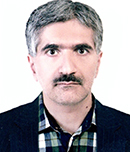
Babak Daneshfard
Shiraz University of MedicalSciences
Iran
Title: Boundary-state light emission quantums in biomolecules
Biography
Biography: Babak Daneshfard
Abstract
If light is to be emitted from substance(s) as through means of jumping down of an electron from a higher position to a lower energy level, as defined by modern physics mainstream phenomenalism, then the collocation of an arbitrarily chosen “central” atom with its adjacent atoms would most naturally provide a hypothetical matrix for observations and calculations to be carried out regarding how much the boundary-atom schemes can probably replace the already routine procedures in the workings of optical physics. True to the fact is that ordinary large-sized molecules (with from 100 to 1000 atoms) mostly having their origin in relatively stable biomolecular structures may –with some computational difficulties provide some sort of continuum for studying optical links through neighboring atoms vibrations without specific recourse, for example, to yet other atoms whose gradually increasing distance to the “central” atom brings in parameters of beyond-5-Å non-boundary conditions that are normally too complicated to be brought out by Eigen functions as Eigen values. There are of course, molar fractions of vibration quality atoms again to be constructurally role-playing in nearly exact determination of the amount of error arising from the actuality that biomolecular atomic regionalization gets out of the state of arbitrariness. In case this parameter were not to be detectable, adjustable (through adding on or deleting metal atoms on recipient sites on the said large molecules, or: alternatively, through being in possession of optic isomers) or even removable (say, by means of picking totally different biomolecules), the clamped string of atoms considered to be in the same region should have, consequently, not provided constraints to assist in building up even the differential equations themselves.

